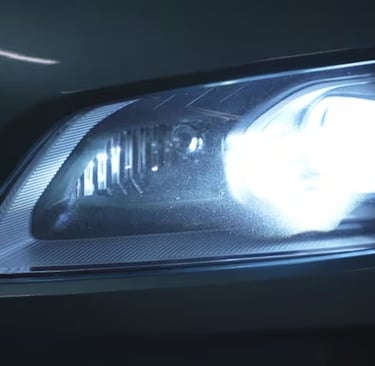Headlights Seem Brighter These Days — and They Are, Experts Say
Subhadarshi Tripathy
12/24/20242 min read


If night drives feel more blinding than ever, it’s not your imagination. Experts confirm that LED headlights on modern vehicles are significantly brighter and more intense than traditional halogen lights — creating what researchers call “discomfort glare.”
“Headlights are getting brighter, smaller, and bluer,” said Daniel Stern, chief editor of Driving Vision News. “All three of those things increase a particular kind of glare.”
The Rise of LEDs
LED (light-emitting diode) headlights, now standard in many vehicles, use semiconductors to produce an intense white light that mimics daylight. Unlike halogen lights, LEDs are longer-lasting and more energy-efficient. However, their concentrated brightness and blue hue can make it difficult for oncoming drivers to see.
While LEDs have been used in vehicles since the 1990s, their widespread adoption over the past two decades has left many drivers struggling to adjust.
Impact on Drivers
The glare is particularly challenging for older drivers. By age 60, most people need three times the light to see compared to someone in their 20s, and they’re more sensitive to glare, according to the National Institute of Health.
Bruce Haycock, a researcher at Toronto’s KITE institute, created a simulator to study the effects of LED headlights. His research highlights how bright, unregulated lights can cause “debilitating” distractions.
“It’s very hard to see the world around those oncoming headlights,” Haycock said.
Canadian Regulations Lagging
Unlike Europe, where Adaptive Driving Beam (ADB) technology has been standard for 15 years, Canada only began permitting such systems in 2018. These advanced headlights adjust automatically to reduce glare for oncoming drivers.
Transport Canada updated its headlight regulations in 2018 to include height and automated leveling requirements, but researchers like Stern argue the rules still lag behind advancements in lighting technology.
Adding to the problem, many drivers replace halogen bulbs with aftermarket LED kits, which can create improperly aimed beams and worsen glare. Provincial and territorial governments are responsible for regulating such modifications, but enforcement is rare due to the lack of routine vehicle inspections.
Temporary Solutions
For now, drivers are turning to anti-glare glasses to reduce the impact of harsh headlights. Jaspreet Paul Singh of Prestige Optical in Vancouver recommends lenses that filter certain wavelengths of light, though he acknowledges they can only do so much.
“If there were regulations on how bright a light can be, that would definitely be helpful,” Singh said.
The Road Ahead
Experts like Haycock and Stern stress the need for better lighting design, stricter regulations, and public awareness to mitigate the dangers of headlight glare.
“Until Canada catches up with global standards, drivers are left squinting through the dazzle,” Stern said.
News
Stay updated with the latest BC news stories, subscribe to our newsletter today.
SUBSCRIBE
© 2025 Innovatory Labs Inc.. All rights reserved.
LINKS
